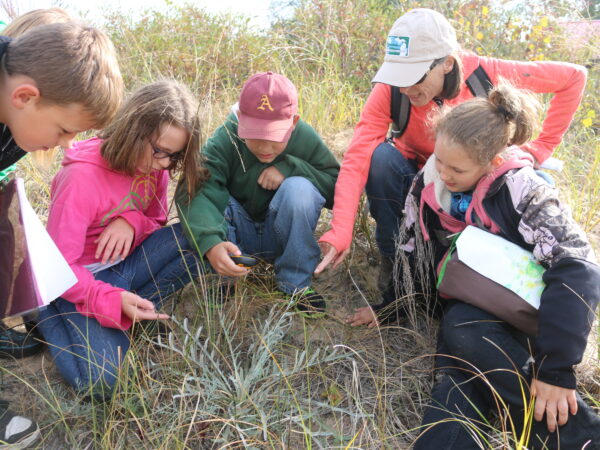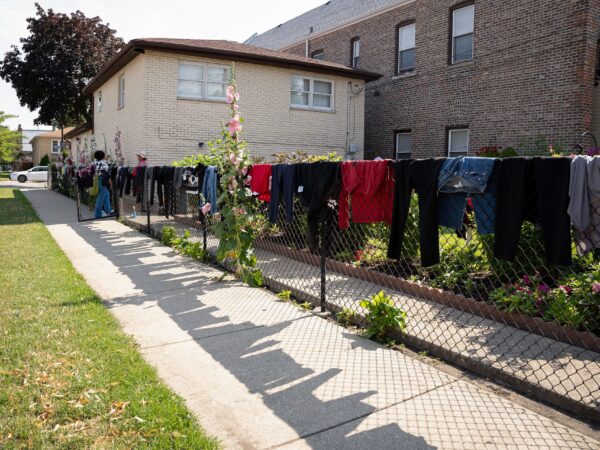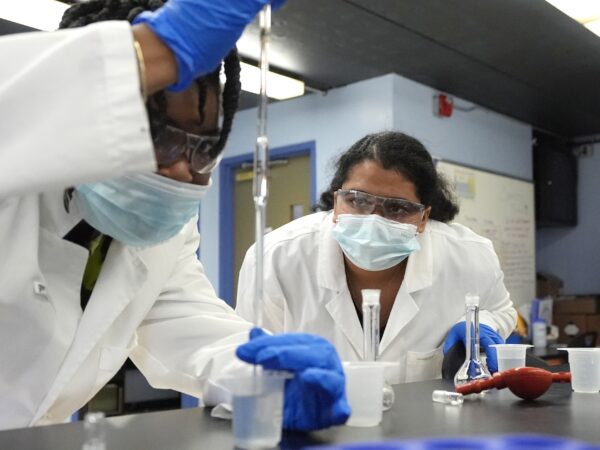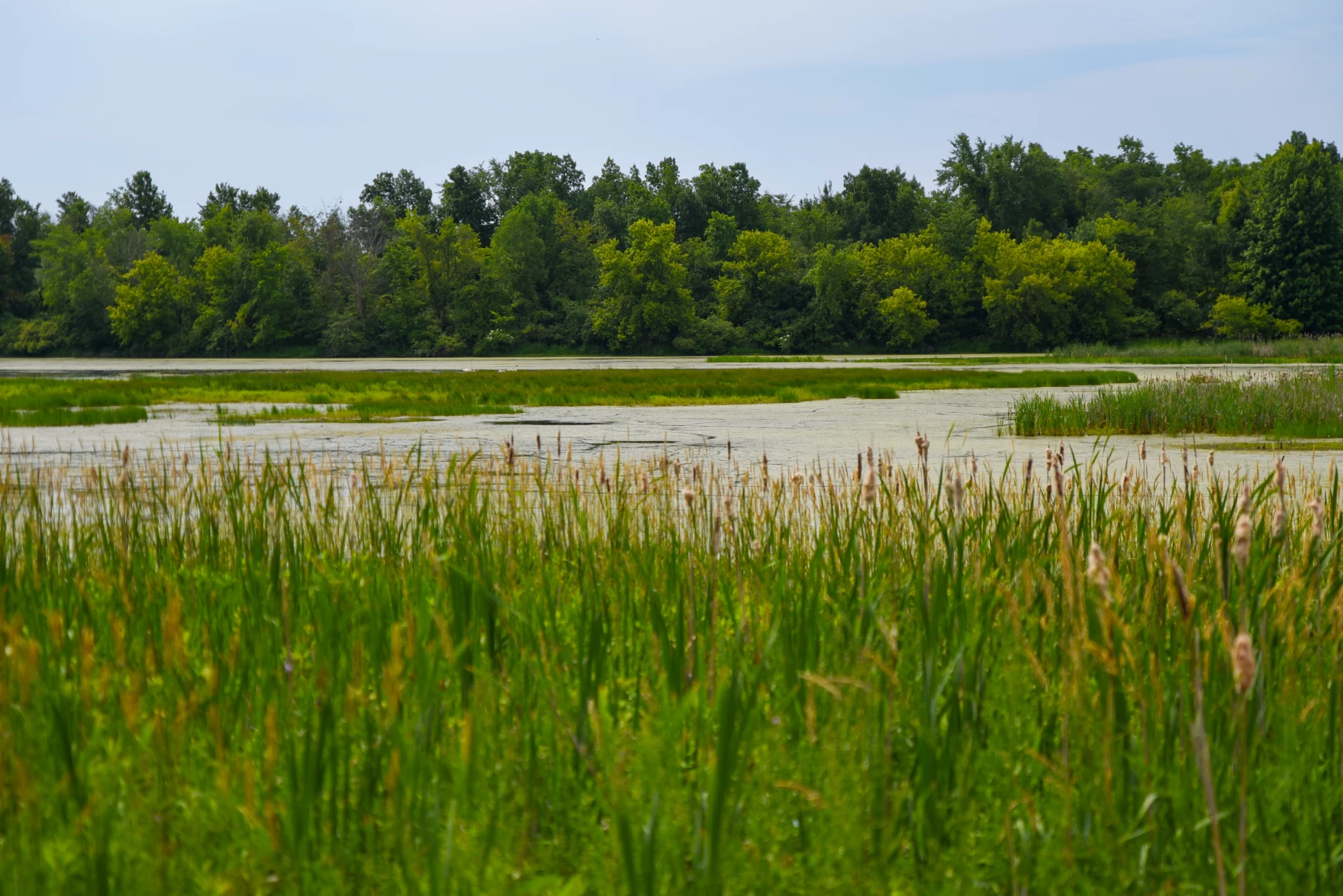
By Lester Graham, Michigan Public
The Great Lakes News Collaborative includes Bridge Michigan; Circle of Blue; Great Lakes Now at Detroit Public Television; Michigan Public, Michigan’s NPR News Leader; and who work together to bring audiences news and information about the impact of climate change, pollution, and aging infrastructure on the Great Lakes and drinking water. This independent journalism is supported by the Charles Stewart Mott Foundation. Find all the work HERE.
Michigan is looking at ways to reduce the amount of agricultural nutrient pollution getting into Lake Erie. Phosphorus feeds the toxic green blooms that form every summer that are harmful for people and pets. And nitrogen increases the toxicity of those blooms. The state is hoping to reduce some of that ag pollution.
Trucks and cars are pulling into the Schoonover Waterfowl Production Area in southern Lenawee County, just eight miles north of the Ohio border. Conservationists are here to learn from the U.S. Fish and Wildlife Service, Michigan Department of Natural Resources, and Ducks Unlimited among others. This field workshop is looking at best practices for restoring a wetland like this 95 acre site.
But what we’re interested in is just across the road. The Michigan DNR is planning a 370 acre wetland restoration there. The state is getting assistance from Ducks Unlimited (DU).
“Ducks Unlimited’s role here is to act as the technical assistance for engineering support and for land acquisition support,” said Kali Rush, a regional biologist with the organization.
Ducks Unlimited has designed projects all over Michigan for federal and state agencies. Actually, it has designed wetland restorations across the North American continent.
This latest restoration led by the Michigan DNR is a pilot project to help capture phosphorus and nitrogen runoff from farm fields in the headwaters of the River Raisin watershed before it gets into Lake Erie.
The western basin of Erie is plagued by large toxic cyanobacterial blooms that are fed by those nutrients. Rush says some of the land to be restored as wetland is being farmed right now.
“(It’s) kind of marginal land where the farmers are struggling to make money or harvest their crops. The plan is to restore that area back to wetland and then monitor the phosphorus reduction in and out of that wetland.”
Restoring wetlands to capture nutrient runoff is one of the major efforts by Michigan. Another is to persuade farmers to change how they farm to reduce runoff to begin with. But government agents don’t always have much influence on skeptical farmers. They rely on third party organizations to be the go-between. So far, there’s not been enough buy-in to reduce nutrient pollution enough.
This new and larger than usual wetland restoration for Michigan government is an experiment.
“The pilot project is really a demonstration site to kind of prove concept of being able to take a former farm field and establish a wetland that can help with water filtration and then reduce nutrient loads into Lake Erie, ultimately,” said Steve Chadwick, Senior Great Lakes Wetlands Advisor for Michigan’s Department of Natural Resources.
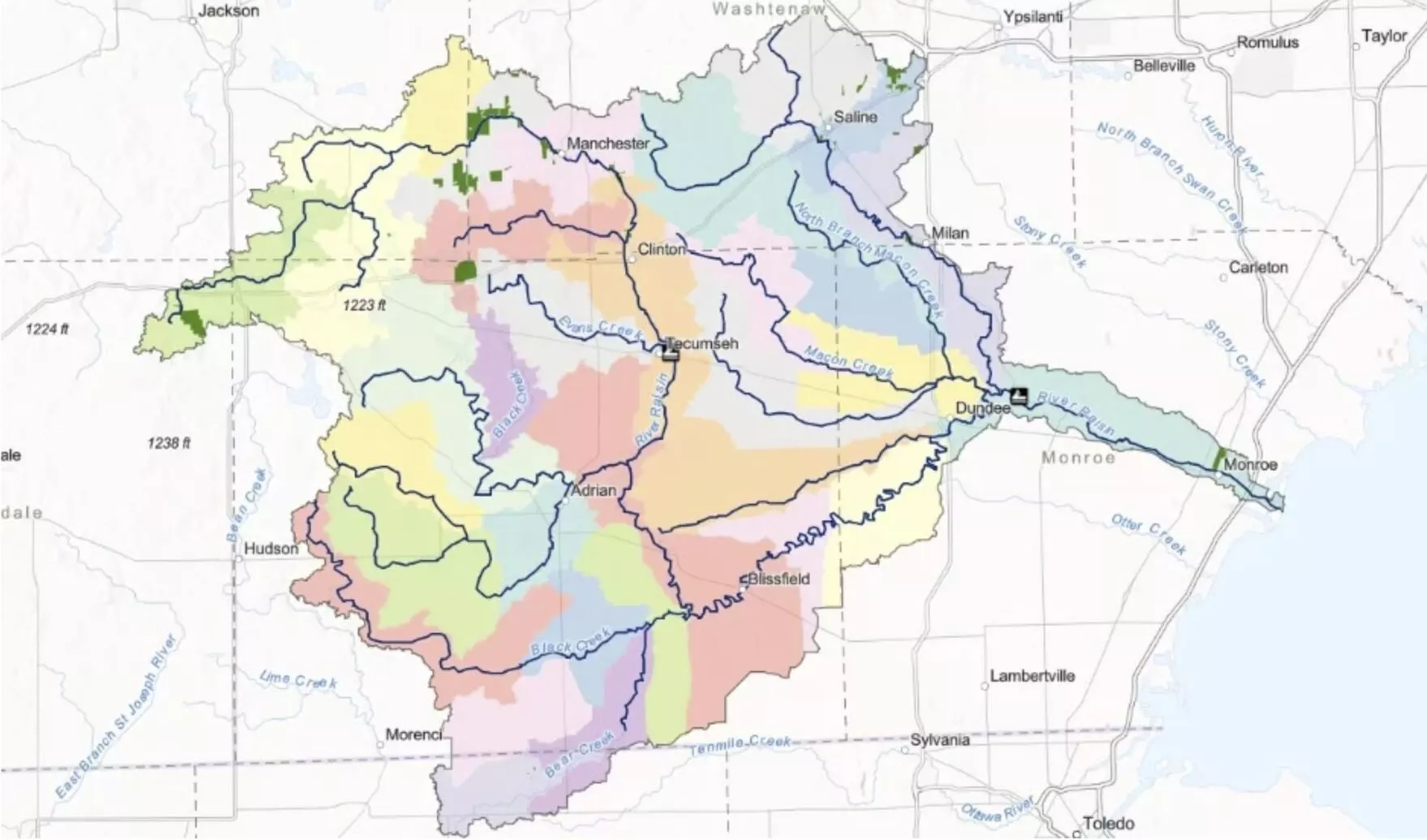
The River Raisin watershed includes a significant portion of farmland in southeast Michigan and part of Ohio. (Photo courtesy of River Raisin Watershed Council, The River Raisin Institute and The Washtenaw County Water Resource Commissioner’s Office)
Before this land was drained and plowed by settlers, this area was a 1,000 acre swamp.
“A very large wetland basin that we think, you know, our best estimates are probably a northern white cedar swamp or a mixed conifer swamp,” said Randy Knapik, a Wetland Habitat Biologist for the DNR.
But now, upstream of this site is a maze of ditches and tile drains, keeping farmland dry enough to plant and sending that water rushing to the River Raisin.
Some of the project land is currently trees and grasslands. That will stay because it also slows and filters water. Next big construction equipment will move in to shape the rest of it into something that resembles the past terrain. Kali Rush said it will be great wildlife habitat for waterfowl and more. And, like all wetlands, a water filter.
“So it’s really exciting to be able to take almost half of this historic basin and restore it back to wetlands that will work within our current system and clean that water as it’s going down to Lake Erie.”
Steve Chadwick said most of the work will be finished before the end of next year. Between now and then, the DNR is measuring how much phosphorus is running through the ditches and drains. It will use that data to compare to how much phosphorus leaves the restored wetland when it’s finished.
“I think success initially is going to be measured in how many nutrients were ultimately reduced from going into Lake Erie,” Chadwick said.
Randy Knapik agrees that is the primary goal.
But, even if the site doesn’t capture as much ag runoff as hoped, it still is a win for the area.
“And in this particular case, at the end of the pilot, it will be a new state game area here with Michigan DNR Wildlife Division, allowing the public to come out here, recreate birdwatch, hunt and fish, and trap in area of the state that those opportunities are quite limited.”
There are other smaller wetland projects in the Michigan portion of the Lake Erie watershed that also should help reduce nutrient pollution. But it will take many of those projects and large phosphorus reductions at small city wastewater treatment plants and, yes, at farms if Michigan and Ohio are to reduce nutrient pollution by 40 percent as agreed. Both states will miss the deadline for the reduction, but both states continue to pursue ways to eventually get there.
Catch more news at Great Lakes Now:
Why some municipalities are looking at putting solar panels on water
Birders flock to the Capitol to urge lawmakers to pass bills to improve the environment
Featured image: Part of the wetlands at the U.S. Fish and Wildlife Service’s Schoonover Waterfowl Production Area in southern Lenawee County, just eight miles north of the Ohio border. Just across the road, the State of Michigan plans to restore wetlands on a 370 acre site to reduce fertilizer runoff from reaching Lake Erie. (Lester Graham/Michigan Public)


